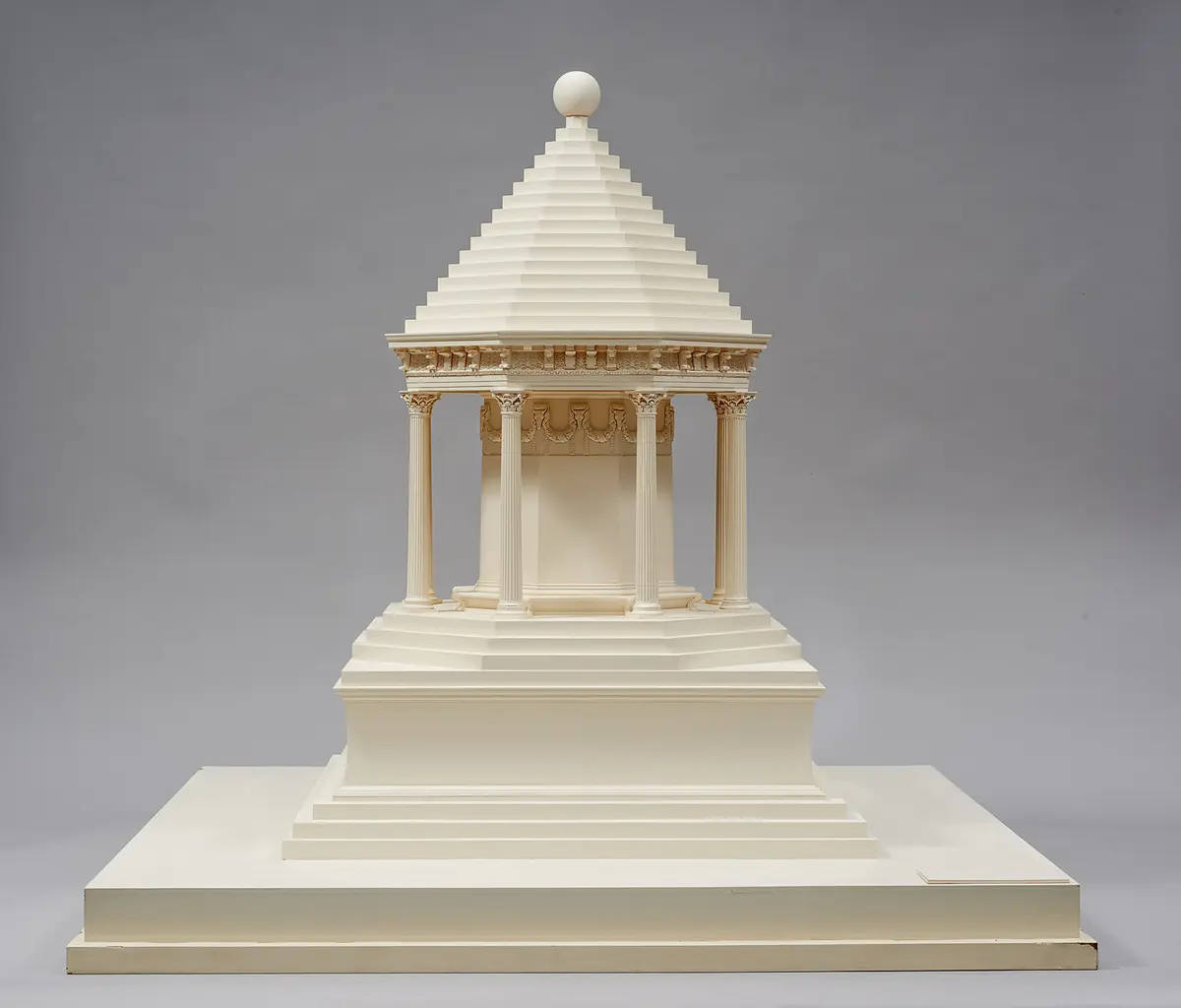Oktogon (Grab der Arsinoe)
Modell des Oktogons (Inv.-Nrn. I 1633 a-m): Das Oktogon war ein Grabbau an einer prominenten Straßenkreuzung im Zentrum von Ephesos. Der marmorverkleidete Sockel ist in Ephesos erhalten, darin befindet sich eine Grabkammer mit einem undekorierten Marmorsarkophag. Bestattungen innerhalb der Stadt waren in der Antike aus religiösen und hygienischen Gründen verboten. Ausnahmen galten für besondere Persönlichkeiten wie Könige, Stifter, Stadtgründer oder Heroen. Das gefundene Skelett war jedoch das einer jungen, nicht einmal achtzehnjährigen Frau! Ohne Grabinschrift war ihre Benennung zunächst schwierig. Die korinthischen Säulenkapitelle und der Dekor des Gebälks lassen sich im Vergleich mit gut datierten Bauten in das Ende des 1. Jahrhunderts v. Chr. einordnen. Die ungewöhnliche Form des Baus mit einem achteckigen Geschoß verweist auf Ägypten und Libyen. Einem vergleichbaren dreigeschoßigen Aufbau folgt der Pharos, der Leuchtturm von Alexandria in Ägypten, eines der Sieben Weltwunder der Antike. Mit diesen Anhaltspunkten gelang es, die Verstorbene als die Ptolemäer-Prinzessin Arsinoë IV. zu identifizieren. Sie war die jüngere Schwester Kleopatras und damit zugleich deren Konkurrentin um den ägyptischen Thron, weshalb sie von Caesar in das Artemis-Heiligtum von Ephesos ins Exil geschickt wurde. Das Privileg der Asylie führte das Artemision auf die Erzählung zurück, bereits die Amazonen hätten hier Zuflucht gefunden. Kleopatra empfand Arsinoë aber weiterhin als Konkurrentin und überredete 41 v. Chr. Marcus Antonius, sie in Ephesos ermorden zu lassen. Dieser ungeheure Frevel an der Göttin Artemis wurde erst Jahre später gesühnt: Augustus stellte »Recht und Ordnung« wieder her und rief ein neues »Goldenes Zeitalter« aus. In diesem Zusammenhang muss auch die Errichtung des monumentalen Grabbaus verstanden werden. Manche Details der Architekturdekoration sind für Kleinasien ungewöhnlich und erst wenige Jahre zuvor in Italien entwickelt worden, was den Schluss nahelegt, dass der Bau nicht nur von Augustus in Auftrag gegeben, sondern auch von seinen Architekten und Handwerkern ausgeführt wurde.
Title:
Oktogon (Grab der Arsinoe)
Time:
Hergestellt 1977 - 1978
Object Name:
Modell
Material/technology:
Plexiglas, weiß gespritzt, Maßstab 1 : 25 / Hergestellt 1977-1978 / H. Kropf Modellbau, Graz
Copyright:
Kunsthistorisches Museum Wien, Antikensammlung
Invs.:
Antikensammlung, XIV Z 268
Provenance:
Hergestellt im Auftrag des KHM, Graz, 1970er Jahre
